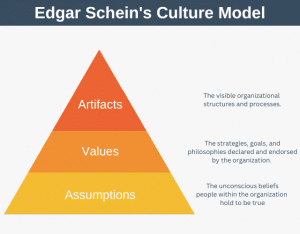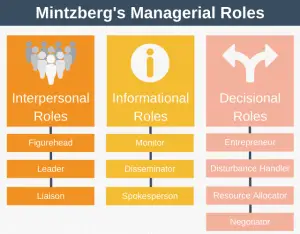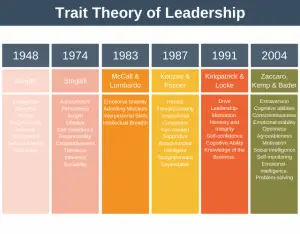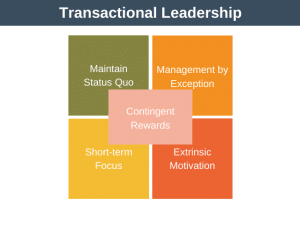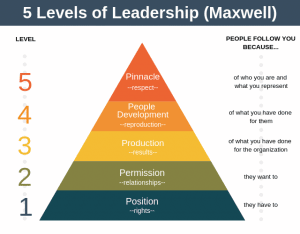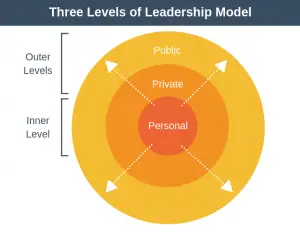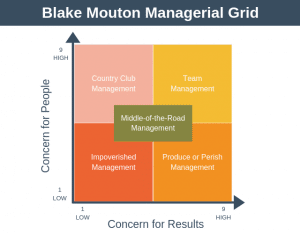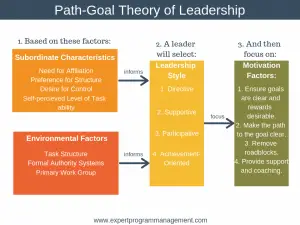Outside of scheduled meetings, how often do you speak to your manager? Similarly, outside of scheduled meetings how often do you speak individually with the members of your team? Do these interactions happen daily, weekly, or maybe only every now and again? One technique you can use to connect with your team and remain top-of-mind is Management by Wandering Around (MBWA), also called Management by Walking Around.
Overview of MBWA
Management by Walking Around is a style of management whereby managers walk the office floor to talk to their employees, ask questions, and resolve issues where necessary.
It allows a manager to model the behaviors they expect to see from others and remain engaged with their team and the front line of their organization.
From a team’s perspective, it enables them to be more connected to their manager, raise concerns and issues, and make suggestions to improve how things are done. It brings the manager to the team rather than waiting for the team to approach the manager. It makes the manager seem like a person as opposed to a distant figure.
If you wait for people to come to you, you’ll only get small problems. You must go and find them. The big problems are where people don’t realize they have one in the first place.
W. Edwards Deming
MBWA might sound like a fancy term for something simple (walking around the office), but it is actually a very deliberate strategy enabling a manager to engage closely with employees, learn about the issues and concerns they might have, and model the behavior they expect to see in them.
MBWA requires personal involvement, that you develop good listening skills, that you develop your referent power (a fancy way of describing leading by example), and the ability to give appropriate praise and recognition (reward power). It will only work if you are genuinely interested in your subordinates and the work they are doing.
History of MBWA
Management by Walking Around was practiced at Hewlett Packard during the 1970’s. In the 1980’s the method was popularized by Tom Peters and Robert H. Waterman in their book, In Search of Excellence: Lessons from America’s Best-Run Companies.
Buy from AmazonIn the book, Peters and Waterman asserted that it was no accident that the most successful companies had managers that spent more time engaging with their team and the company’s customers, than the alternative of being confined to their office all of the time.

The Relevance of MBWA Today
Business today is very different from that of the 1970’s, and even very different from that of the 1980’s. These days a huge proportion of business is done using email, telephone calls, and conference calls.
This communication could occur from satellite offices, home offices, airport lounges, hotel rooms, and even from the back of a taxi, amongst others.
In today’s world, although walking the office floor in person is always preferable, where that isn’t possible then you can still practice MBWA by calling members of your team regularly at unplanned times and with no agenda, showing appreciation and recognition of individual team members when on conference calls, and sharing what you’ve been up to with your team.
In many companies, close encounters between senior executives and more junior staff are a very rare occurrence.
How to Use MBWA
If you’d like to start using Management by Walking Around then here are a number of tips which can help you to do it right:
- Don’t leave MBWA to chance and undertake it in an ad-hoc fashion, but instead make a plan for it, and preferably do it daily.
- It is your responsibility to strike up conversations, don’t just wander around the office hoping someone speaks to you.
- Share any good news that you have as well as what you’ve been up to. Invite others to share any good news they have.
- Build rapport by talking about your family, friends, vacations, and hobbies. Invite others to share similar information if they desire.
- In general, you should be listening more than you talk. Whilst doing this it is important to listen without judgment. You don’t want to be seen as a senior manager doing an inspection, but more as a peer or coach engaging in a dialogue about how things are going and how to improve things.
- Practice active listening, recapping what you’re being told and using questions to dig deeper.
- Practice MBWA on your own, don’t bring your entourage or secretary with you. This is your chance to connect with your staff.
- Keep your eyes and ears open for employees doing something right. Make a point to praise them publicly in front of their peers when you observe this.
- Invite people to share ideas to improve what they do or things in general, including the products and services offered by the company.
- Treat it as an opportunity not just to learn, but also as an opportunity for you to model the behavior you expect to see, and an opportunity to share and model company values.
- If you have a cafeteria, then use it to have lunch with employees. If you don’t have a cafeteria, then invite an employee to go for lunch with you.
- Most of all, don’t overdo it (make people feel scrutinized) and make it fun. If you can keep these two points in mind then people will share more information with you and you’ll enjoy the process more too.
If you have satellite offices, then you might want to consider also doing the following:
- If you are responsible for off-site offices, then plan to visit these offices into your schedule. If you’re unable to attend your satellite offices then at least make calls to people in that office regularly.
- If you are visiting a satellite facility, make a point to engage with individual employees and avoid the trap of just spending time with managers or your direct reports at the facility.
Finally, if you are CEO or lead a team of senior managers, then it is useful to:
- Make Management by Walking Around part of everyone’s performance targets and part of how their bonus is calculated.
Advantages of MBWA
There are a vast array of advantages to using Management by Wandering Around, including:
- Makes you more approachable: once your employees get used to you walking around regularly, they’ll be more likely to see you more as a peer than a superior and be more likely to share successes and issues with you.
- Builds trust: talking to employees regularly without making judgment leads to increased trust.
- Encourages staff to hit goals: building relationships based on the sharing of issues can encourage staff to want to hit both individual and organizational goals.
- Increases motivation: because you’re taking an interest in your people, your staff feel less like unvalued numbers on a spreadsheet, and more like valued members of the team, which can obviously increase motivation.
- Makes work less formal and more friendly: which can boost morale, because people share information in an informal and friendly way. This less formal, more friendly, and approachable workplace, can also lead to reduced unnecessary stress amongst staff.
- Your knowledge will increase: you’ll develop your understanding of how different parts of the organization work, and learn different people’s opinion about how what you do can be improved.
Disadvantages of MBWA
If done right then Management by Walking Around can be very effective, however, there are a number of dangers to watch out for:
- It’s a time-consuming strategy: it obviously takes a significant amount of time to walk around the office taking time away from other tasks. This can be exaggerated by the fact that not every conversation is going to lead to a benefit. Because of this, MBWA is not suitable in every business situation, such as when an organization is under threat of closure, and the focus needs to be on execution rather than discussion and debate.
- It emphasizes the importance of employee opinion: this can, of course, be useful, but it is important not to let it take you away from other inputs to decision making, such as industry trends and what your competitors are doing.
- The manager can inadvertently influence staff decisions: for example, if staff had identified 2 potential suppliers and then the manager suggests a third, there is a danger staff will assess the third supplier to be the preferred supplier to win favor with the manager. Be careful with what you say to avoid this happening.
- Implementation is key: it’s important not just to learn information as you wander around, you need to act on it.
- Employees can feel under a microscope: if you don’t strike the right balance, staff can feel as though they are under surveillance.
- It can’t be benchmarked: there is no system in existence which can benchmark and measure the value of MBWA.
MBWA Examples
Two famous examples of Management by Walking Around are:
- Howard Schultz, founder of Starbucks, would visit 25 stores per week to learn what was happening at the coalface, and reinforce the values of the company.
- Andy Pearson, as President of PepsiCo, would regularly sit down with a junior brand manager at random, to discover what was happening in their world, and get unfiltered data as to what was going on in the company.
Management By Walking Around Summary
Management by Walking Around may seem like a management technique that is almost too simple to learn about, but to do it right it must be done in a planned and deliberate manner to generate the multiple benefits it offers. The main downside is that it takes time to establish good informal relationships with your staff so that they talk to you openly, and that it is very time-consuming to implement.


